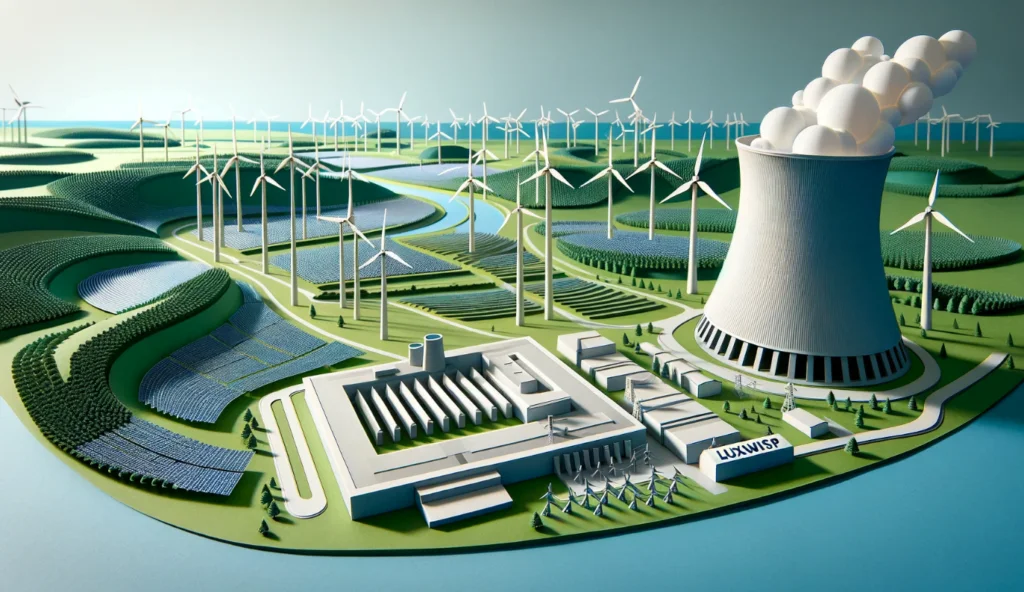The pros of coal are its abundant supply, key role in global energy, and economic benefits including job creation in regions like the U.S. and Australia. Its affordability, reliability, and versatility in industrial uses, combined with technological advancements, contribute to energy security and support for transitioning to renewable energy.
The cons of coal are environmental damage, health risks from air pollution, contribution to climate change, and challenges in waste management. Its non-renewable nature, radioactive emissions, and high pollution control costs, along with impacts on water resources and community displacement, pose serious sustainability concerns. Coal dependence also hinders the shift towards cleaner energy sources.
Takeaways:
- Coal fueled the industrial revolution, enhancing goods and services distribution.
- Coal mining created jobs and built communities.
- Despite its abundance, coal’s environmental impact raises significant concerns.
- Technological efforts to mitigate these impacts are often costly and not fully effective.
Coal Industry: Quick Facts & Insights
Employment Statistics:
- U.S. Employment (2020): Around 41,000 people in the coal mining industry.
- Kentucky Jobs (2020): 3,909 coal jobs identified.
- West Virginia Job Decline: Decrease of 1,016 jobs from 2019 to 2020.
- Wyoming Job Trend (2018-2019): Decrease of 4%, from 5,262 to 5,036 jobs.
- Queensland, Australia (2020): More than 37,800 full-time equivalent jobs in coal mining.
Global Industry Overview:
- Energy Source Ranking: Coal remains a leading energy source among non-renewable resources worldwide.
- Hard Coal Usage: Slight increase in the use of hard coal in recent years.
- Reserve Size: Coal has the largest reserves of all non-renewable energy resources.
- Production Measurement: Global coal production measured in exajoules from 2000-2022.
- Reserve to Production Ratio: Varied by region in 2020.
Sources:
- Coal Industry Jobs Statistics: Market Report & Data • Gitnux
- Global coal mining industry – statistics & facts | Statista
- Annual Coal Reports – U.S. Energy Information Administration (EIA)
- Coal Data – U.S. Energy Information Administration (EIA)
- Coal explained – data and statistics – U.S. Energy Information Administration (EIA)
- Coal – U.S. Energy Information Administration (EIA)
| Pros of Coal Energy | Cons of Coal Energy |
|---|---|
| Abundance and Accessibility | Environmental Impact |
| Economic Benefits and Job Creation | Air Pollution and Public Health Risks |
| Affordability and Reliability | Contribution to Climate Change |
| Versatile Industrial Uses | Non-renewable Nature |
| Stability in Energy Supply | Radioactive Emissions |
| Support for Base-load Electricity | Cost of Pollution Control |
| Technological Advances in Utilization | Water Usage and Contamination |
| Energy Security | Waste Generation |
| Support for Renewable Energy Transition | Land Use and Displacement |
| Economic Development in Coal-rich Regions | Dependency and Transition Challenges |
Pros of Coal Energy

- Abundance and Accessibility: Coal is the world’s most abundant source of electricity, contributing to more than 36% of global electricity. Its vast reserves are spread across various regions, ensuring a steady supply. This abundance plays a crucial role in stabilizing energy markets and ensuring energy security for many countries.
- Economic Benefits and Job Creation: The coal industry is a significant contributor to employment, with the U.S. coal mining industry employing around 41,000 people and Queensland, Australia, having over 37,800 full-time equivalent jobs in coal mining as of 2020. These jobs not only support local economies but also contribute to national economic growth.
- Affordability and Reliability: Coal remains a reliable and affordable source of electricity. Its cost-effectiveness is evident in its extensive use for power generation and in industries such as aluminum production, cement production, and transportation fuel. The low cost of coal-derived energy is crucial for developing countries and for maintaining competitive industries worldwide.
- Versatile Industrial Uses: Beyond electricity generation, coal is instrumental in producing gas, supporting industrial processes, and manufacturing products like aluminum and cement. This versatility makes coal a vital resource in various sectors, contributing to the diversity and resilience of industrial supply chains.
- Stability in Energy Supply: Due to its abundant reserves and widespread availability, coal provides a stable source of energy. This stability is essential in regions where alternative energy sources are not yet viable or readily available, ensuring continuous power supply and industrial productivity.
- Support for Base-load Electricity: Coal-fired power plants are capable of providing base-load electricity, meaning they can consistently supply power to meet the minimum demand. This reliability is crucial for maintaining a stable and uninterrupted power supply in the electrical grid.
- Technological Advances in Utilization: Advances in technology have led to more efficient and cleaner ways of using coal. While still a work in progress, these technologies aim to reduce the environmental impact of coal usage, potentially making it a more sustainable energy source in the future.
- Energy Security: Coal’s abundance and geographical distribution contribute to global energy security. Countries with coal reserves are less dependent on imports for their energy needs, reducing vulnerability to international energy market fluctuations and political instabilities.
- Support for Renewable Energy Transition: As the world transitions to renewable energy, coal can provide the necessary base-load power to support this transition. It acts as a buffer, ensuring energy availability while renewable infrastructure and technologies are being developed and scaled up.
- Economic Development in Coal-rich Regions: Regions rich in coal reserves often experience economic development due to mining activities. The industry stimulates local economies through job creation, infrastructure development, and increased local spending, contributing to the overall socio-economic upliftment of the area.
Cons of Coal Energy

- Environmental Impact: Coal mining significantly affects landscapes and habitats, leading to issues like deforestation, erosion, and groundwater contamination. The physical disruption and degradation of land associated with coal mining can have long-term ecological consequences.
- Air Pollution and Public Health Risks: The burning of coal releases pollutants that contribute to air pollution, causing health issues like asthma, breathing difficulties, and more severe conditions such as heart problems and cancer. These health risks have a substantial impact on public health systems and the quality of life in communities near coal-fired plants.
- Contribution to Climate Change: Coal is a major emitter of carbon dioxide (CO2), a greenhouse gas that contributes significantly to climate change. Its high carbon emissions are a central concern in global efforts to reduce greenhouse gas emissions and combat global warming.
- Non-renewable Nature: As a non-renewable resource, coal has a finite supply. This limitation means that reliance on coal is not sustainable in the long term, necessitating a transition to renewable energy sources to ensure future energy security.
- Radioactive Emissions: Coal contains naturally occurring radioactive materials, and its combustion releases these materials into the environment. This radioactivity, albeit at low levels, adds another layer of environmental and health concerns associated with coal use.
- Cost of Pollution Control: Cleaning coal’s exhaust to remove particulates and sulfur dioxide is an expensive process. These costs add to the overall expense of using coal, impacting its economic viability, especially as cleaner energy alternatives become more cost-effective.
- Water Usage and Contamination: Coal mining and power generation require significant water resources, leading to water scarcity issues in some regions. Additionally, coal mining and processing can contaminate local water supplies, affecting ecosystems and community health.
- Waste Generation: Coal combustion generates a considerable amount of waste, including fly ash, bottom ash, and flue-gas desulfurization sludge. The management and disposal of this waste are challenging, posing environmental and health risks.
- Land Use and Displacement: Large-scale coal mining operations often require substantial land, leading to the displacement of communities and the loss of agricultural land. This land use change can have far-reaching social and economic impacts on local populations.
- Dependency and Transition Challenges: Regions and countries heavily reliant on coal for energy and economic activity face significant challenges in transitioning to cleaner energy sources. This dependency creates a barrier to adopting more sustainable energy practices, impacting global efforts to mitigate climate change and transition to a low-carbon economy.
Historical Significance of Coal

Coal’s pivotal role in powering the industrial revolution and propelling economic growth over the past two centuries underscores its historical significance as a foundational energy resource. The advent of coal-powered steam engines marked a turning point in manufacturing, transport, and broader economic activities, effectively transforming agrarian societies into industrial powerhouses. The dense energy coal provided became the linchpin for technological advancements and mechanization, reshaping the global economic landscape.
The infrastructure developed around coal usage, from railways for transportation to the widespread establishment of power plants, not only facilitated the efficient distribution of goods and services but also laid the groundwork for modern energy systems. Moreover, coal mining itself emerged as a vital industry, generating employment and fostering robust communities around mining districts.
However, as recognition of coal’s environmental footprint grew, so did the efforts to mitigate its impact. This led to progressive environmental regulations and the advancement of cleaner technologies aimed at curbing emissions and reducing damage to ecosystems.
The historical significance of coal is thus twofold: it played a crucial role in the development of contemporary societies, and it has prompted the ongoing evolution of energy policies and technologies towards sustainability.
Economic Benefits of Coal

While acknowledging the historical significance of coal in shaping modern society, it is equally important to consider the substantial economic advantages it continues to provide as a plentiful and cost-efficient energy source. The economic benefits of coal are multifaceted, extending from its affordability to its impact on industry and national energy security.
Coal’s economic contributions can be delineated as follows:
- Abundant Supply: With an estimated global reserve of over 1 trillion tons, coal’s abundance ensures a steady and reliable energy source, which translates into stable prices and economic predictability.
- Cost-Effectiveness: Coal’s cost-efficiency is a major advantage, making it an attractive option for power generation and offering affordable energy access to a broad consumer base, fostering economic growth.
- Industrial Stability: As a reliable power generator, coal provides a solid foundation for industrial operations, contributing to the stability and efficiency of manufacturing and other sectors.
- Long-Term Security: In regions like the United States, where coal reserves could last over 400 years, there is a sense of long-term energy security, which supports sustained economic development and planning.
These economic benefits of coal demonstrate its continued relevance as an energy source, despite the growing emphasis on renewable alternatives.
Energy Security and Coal

Energy security remains a pivotal concern for nations worldwide, and coal’s abundant availability and cost-effectiveness play a crucial role in ensuring a continuous and reliable energy supply. Unlike renewable sources that often depend on the weather and require energy storage solutions, coal provides a steady flow of energy. This reliability is particularly crucial during peak demand periods when the stability of the electrical grid is at stake.
For over two hundred years, coal has been a cornerstone of our energy generation, deeply integrated into our energy infrastructure. Its historical prevalence means that transitioning away from coal requires significant investment and time to overhaul existing systems.
Advancements in technology have allowed coal to be converted into cleaner and more efficient forms of fuel. Clean coal technologies aim to lower emissions produced during combustion, striking a balance between maintaining existing infrastructures and mitigating environmental impacts. These developments are essential in preserving energy security while addressing the global demand for more environmentally friendly energy solutions.
Environmental Impact of Coal

Despite coal’s role in providing energy security, its extensive use has significant environmental repercussions, primarily due to the release of harmful gases during both mining and combustion processes. These emissions contribute to air pollution, global warming, and climate change, making coal a major concern for environmental sustainability.
The environmental impact of coal is multi-dimensional, involving both the extraction process and the emissions from burning coal for energy:
- Air Pollution: Coal-fired power plants emit a variety of pollutants, including sulfur dioxide (SO2), nitrogen oxides (NOx), particulate matter, and heavy metals like mercury.
- Greenhouse Gases: Burning coal is one of the largest sources of carbon dioxide (CO2), a potent greenhouse gas. Additionally, coal mining releases methane (CH4), which has an even higher global warming potential than CO2.
- Technological Solutions: Advances in technology can mitigate some environmental impacts, such as capturing and storing CO2 or converting coal to cleaner energy sources.
- Efficiency Improvements: Modernizing old coal-fired power plants to be more efficient can reduce emissions. Recovering and using methane from coal mines also prevents its release into the atmosphere.
Despite these mitigating strategies, coal’s environmental footprint remains a critical challenge to address for a sustainable future.
Health Concerns From Coal Use

The use of coal as an energy source is linked to various health concerns, including respiratory diseases and heavy metal toxicity. When coal is burned, it emits sulfur dioxide and nitrogen oxides, which can exacerbate asthma, bronchitis, and other respiratory conditions. These pollutants also contribute to the formation of smog, which impairs air quality and can have broader health impacts on populations.
Moreover, coal combustion releases mercury, a heavy metal that accumulates in the food chain, particularly in fish, posing risks to neurological health in humans and wildlife. The exposure to mercury can have serious consequences, including developmental issues in children and cognitive decline in adults.
Coal mining is another source of health risks. Miners are exposed to coal dust, which is known to cause pneumoconiosis, or Black Lung Disease, a condition that leads to lung damage and is potentially fatal. Additionally, the process of mining and transporting coal can lead to habitat destruction and water pollution, further affecting the health of ecosystems and surrounding communities. The presence of pollutants in water can have a variety of adverse health effects, from gastrointestinal illnesses to skin conditions, depending on the contaminants involved.
Coal and Climate Change
Coal’s substantial carbon footprint is a primary concern in the context of climate change. The burning of coal is a major source of carbon dioxide, a potent greenhouse gas. Technological advancements in carbon capture and storage at coal-fired power plants offer a pathway to mitigate these emissions. However, the effectiveness and economic viability of these solutions are subject to ongoing debate.
Furthermore, the role of coal in climate policy is increasingly contentious. Governments and stakeholders strive for a balance between energy needs and environmental protection.
Coal’s Carbon Footprint
Significant contributions to global greenhouse gas emissions stem from both the extraction and combustion of coal, with carbon dioxide and methane being the primary pollutants. These emissions are a major concern for climate change, as they contribute to the warming of the planet and the subsequent climate-related impacts.
- Coal mining: Releases methane, a potent greenhouse gas with a high global warming potential.
- Electricity generation: Coal is the leading source of CO2 emissions in this sector.
- Efficiency improvements: Modernizing coal-fired power plants can reduce emissions.
- Carbon capture and storage (CCS): This technology aims to mitigate the impact of coal use by trapping CO2 emissions underground.
Greenhouse Gases Emission
Building upon the discussion of coal’s carbon footprint, it is essential to explore how greenhouse gas emissions from coal mining and combustion exacerbate climate change. The combustion of coal is a significant source of carbon dioxide (CO2), the primary greenhouse gas contributing to global warming. Technological advancements in the coal industry aim to mitigate these emissions through methods such as carbon capture and storage (CCS) and methane recovery. The table below summarizes key points related to coal and greenhouse gas emissions:
| Aspect | Detail | Impact on Climate Change |
|---|---|---|
| CO2 Emissions | Coal combustion releases large amounts of CO2. | Major contributor |
| Technological Advances | CCS and efficient power plants reduce CO2 footprint. | Potentially lower emissions |
| Methane Recovery | Advances allow for capturing methane from coal mines. | Reduces potent GHG release |
| International Efforts | IEA supports replacing old plants with efficient ones. | Global initiative for change |
Implementing these strategies is crucial for reducing the impact of coal on the environment.
Climate Policy Implications
The critical role of coal in global carbon dioxide emissions necessitates the formulation of robust climate policies to mitigate its environmental impact. Addressing coal’s contribution to climate change involves a multifaceted approach, including the implementation of cleaner technologies and tighter regulations.
To make the information more digestible, here are key points:
- Upgrading to more efficient coal-fired power plants to lower emissions.
- Employing carbon capture and storage (CCS) to reduce the carbon footprint of coal energy.
- Advancing technologies to capture methane from coal mines, preventing its release.
- Industry efforts to enhance coal mining and usage practices to minimize ecological harm.
Each measure is a step towards reconciling coal’s economic benefits with the urgent need to address climate change.
Alternatives to Coal Energy

As we consider the transition from coal, renewable energy sources such as solar and wind present viable options that promise a significant reduction in greenhouse gas emissions.
Nuclear power also emerges as a potential alternative, offering a high-energy output with low carbon emissions.
These alternatives, bolstered by technological advancements, are increasingly competitive with traditional fossil fuels and imperative for long-term environmental sustainability.
Renewable Energy Sources
In the quest for cleaner energy solutions, renewable resources such as solar, wind, and hydroelectric power emerge as vital alternatives to traditional coal-based energy production. These sources offer a bevy of benefits, including a reduction in greenhouse gas emissions and a smaller environmental footprint. Unlike coal, which is finite and can be ecologically damaging, renewables harness natural processes that are inherently more sustainable and abundant.
- Solar Energy: Harnesses the sun’s power, providing abundant energy with minimal environmental impact.
- Wind Power: Utilizes air currents to generate electricity, with wind farms now a common sight in many countries.
- Hydroelectric Power: Captures energy from water flows, often a stable and consistent power source.
- Geothermal Energy: Exploits the Earth’s internal heat for electricity and heating, with a very low carbon footprint.
Nuclear Power Potential

Building on the discussion of renewable energy sources, it is crucial to consider the role of nuclear power as an effective alternative to coal with its potential to curb greenhouse gas emissions and provide a dependable supply of energy.
With its high energy density, nuclear power is a formidable option that can generate significant amounts of electricity while consuming less fuel. This energy source stands out for its reliability, operating independently of weather conditions, which is a limitation for some renewables.
Moreover, nuclear energy offers a cleaner production process, markedly reducing air and water pollution in comparison to coal-based energy.
Lastly, nuclear power can contribute to long-term sustainability by diminishing reliance on finite coal reserves, positioning itself as a pivotal component in the transition to a cleaner energy future.
Conclusion
While coal has historically played a pivotal role in powering industrial development and continues to offer economic and energy security benefits, its environmental and health impacts are significant.
The urgency of addressing climate change necessitates the transition towards cleaner energy alternatives.
Acknowledging the challenges faced by communities dependent on the coal industry, it is imperative that sustainable solutions include support for economic diversification and retraining programs to ensure a just transition for all stakeholders.










